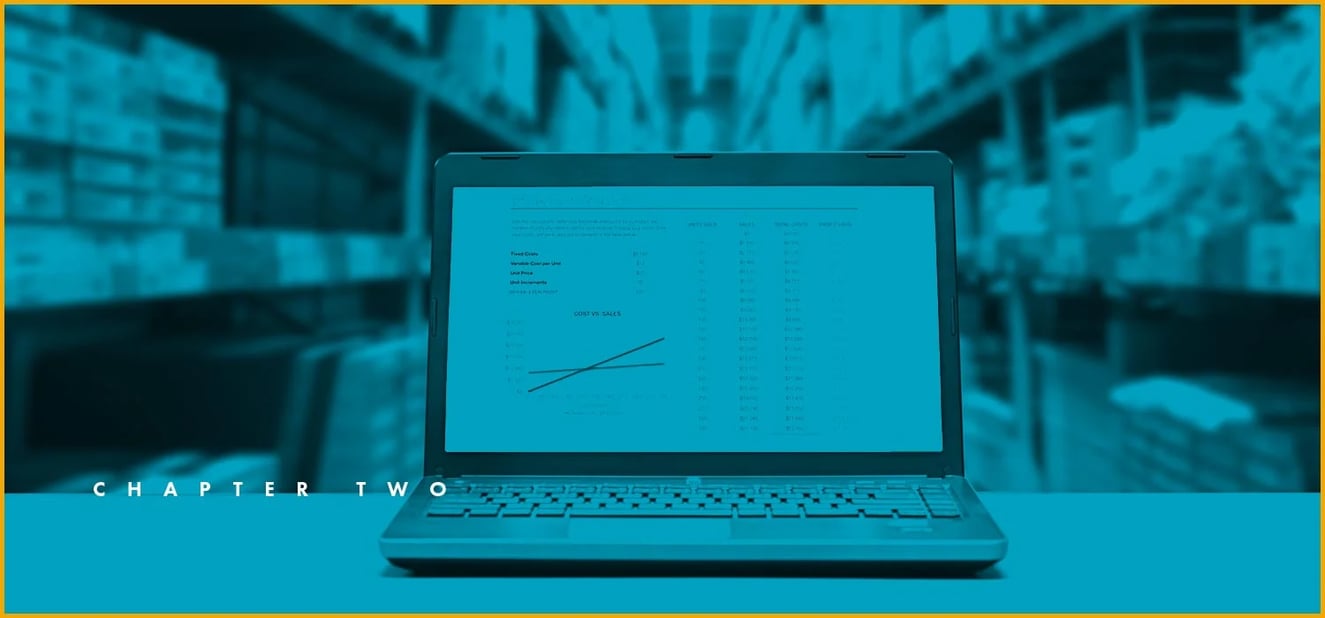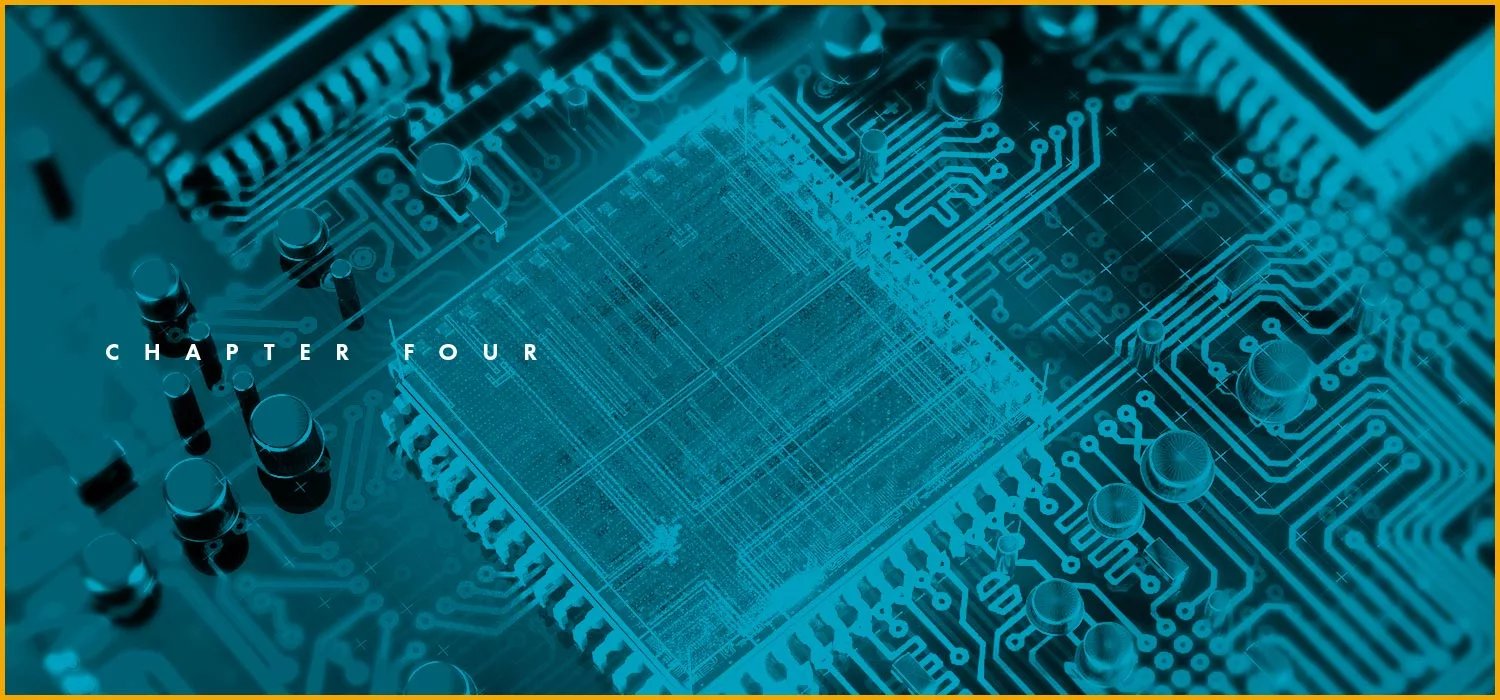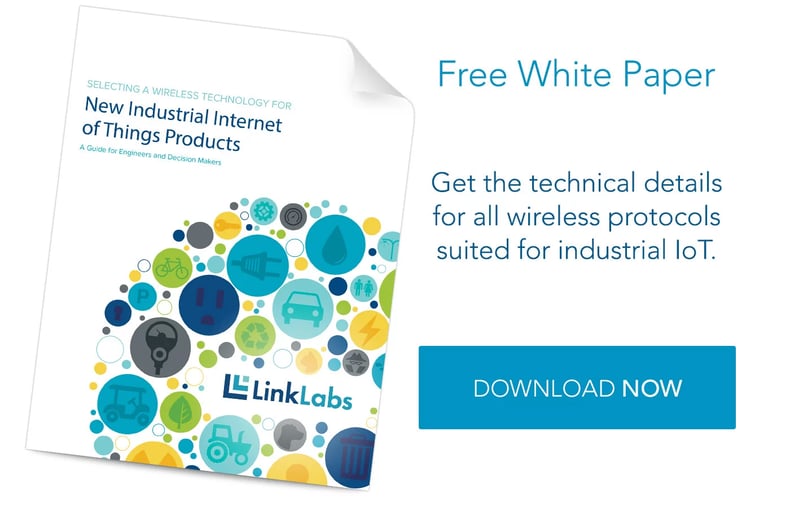In some ways, the term “Internet of Things (IoT)” has been hijacked by what I call the “smart toaster phenomenon.”
For years, IoT device manufacturers have been touting the benefits of smart, connected home appliances—things like smart toasters (which toast your bread perfectly to your liking every time) and smart refrigerators (which can do everything from set expiration date notifications to look up/read recipes). IoT applications like these are capturing the attention of the public, but they’re not where the real money lies.
In my view, connected devices have greater potential, at least in terms of financial impact and ROI, in enterprise settings. That subset of the IoT called Industrial IoT—or IIoT—is slowly gaining a foothold in the market. So instead of smart security systems and smart thermostats, more focus is being redirected to smart warehouses, industrial automation, connected logistics, and numerous other business use cases. Today, IoT devices have a deeper penetration in manufacturing, healthcare, and business than in our homes or phones; you can expect that trend to continue.
For companies interested in implementing an industrial Internet of Things system, this article will provide an overview of industrial IoT, as well as some important IIoT definitions, sample use cases, information about the underlying technology, and advice on how to find the right partner for your particular venture.
|
Table Of Contents |
Chapter 1: An Overview Of Industrial IoT

The “industrial” in industrial IoT is a little misleading. Some might say the term applies to IoT applications used in a manufacturing setting; manufacturing is, in fact, predicted to be the biggest IoT platform by 2021, reaching a market value of $438 million. It’s also leading the pack in terms of industry investment in IoT. But in my view, industrial IoT encompasses device connectivity across all industries (not only manufacturing):
- In healthcare, wearables, mobile apps, and data-based diagnostics could revolutionize the way patients access and receive medical services.
- In business, corporations can take advantage of smart buildings to optimize energy use. (Nearly half of the energy used by buildings is wasted.)
- In retail, industrial IoT applications can increase supply chain efficiencies.
- In transportation, connected sensors can help with cold chain management, fuel consumption optimization, and fleet maintenance.
- Utilities are already deploying smart grid technologies that can help detect and isolate outages, handle priority routing to emergency services, and integrate customer-owned power generation systems into the grid.
The growing categories of use cases show that all industries can reap the benefits of the IoT, not just manufacturing.
The Challenges Of Implementing Industrial IoT
While the industrial IoT has a lot of potential for generating cost savings and efficiencies, it poses a practical challenge in terms of implementation. Most companies have already invested a substantial amount of money in operational technology (OT) that wasn’t necessarily meant to be connected beyond the local network. Though there are standard ways of talking to instruments on buses (Modbus and Profibus, for example), there’s no standard way of connecting to the internet. How will the data stream be captured and routed back into existing data management software systems, while making sure it’s all secure? The real innovation in the years to come will be figuring out how to take it from the local, connected bus of instruments in a production facility and get data out from the cloud for the purposes of analytics.
For example, say you make instrumentation for food manufacturers that measures the temperature of the ingredients and the amount of additives going into the stream. That instrumentation is useful, but it creates a closed-loop process.
There’s additional value to unlock if you can also monitor the health and calibration of the instrument, and help the customer remotely with issues and settings—which requires getting the instrument connected to the internet so the data it generates can be shared. There’s Wifi available, but since the instrument is being used in your customer’s manufacturing facility, not yours, they aren’t likely to let you use it. At this point, your options are limited: You either go with a proprietary connectivity solution (and risk getting locked into a particular architecture) or you build a solution yourself (which is difficult).
How To Step Into Industrial IoT
One of biggest challenges to overcome with the industrial IoT today is systems integration, where sensors, radios, controllers, and software all work together as part of a cohesive system. Widespread standardization at this level is not likely to occur in the next 10 years given the sheer number of competing protocols and technologies.
But that’s no reason to forego the benefits of the IIoT now. Trying to implement it on a company-wide level is too complex, so to get started, my recommendation is to do something small and impactful. Pick one problem, one thing you can measure and improve, and you’ll learn so much—not only about technology but about your own organization and how you would implement things like asset tracking or energy monitoring. Just be wary of the traditional IT partners, like telcos or consulting partners, because the industrial IoT is just as new to them as it is to you, and they don’t necessarily have it nailed either. They often bring in other partners, which could lead to a more convoluted system than you intended.
Next up, we’ll look at the technical and operational definitions of the industrial IoT.
Chapter 2: Technical & Operational Definitions of Industrial IoT

In the previous chapter, we said that the industrial IoT essentially means applying the technology of the Internet of Things to business and industrial use cases. Here’s a more technical IIot definition:
|
What is IIoT? It is a network of interconnected computing devices embedded in physical objects for the purpose of gathering and exchanging data, which is then applied in a business context to create operational savings and efficiencies. |
The data gathered from these interconnected devices is used in a variety of ways, all of which lead to some form of operational transformation. For example, the data could be analyzed to uncover process inefficiencies; it might provide real-time visibility (and greater control) over products being shipped; or it could be used to predict impending breakdowns of industrial machinery. There are myriad other ways in which the data from the IIoT can be used, and more are being uncovered every day.
There are some common threads among all those thousands of use cases that can help formulate an operational definition of IIoT: machine-to-machine intelligence that enables an organization to generate savings through improved efficiency, improved safety, and/or increased uptime.
Improving Efficiency
The most common benefit cited for the IIot is improved efficiency—companies save time, money, or both by leveraging their connected devices.
You may think you’ve optimized your processes as much as you can, but humans can only optimize processes to a certain (and limited) extent. Only when you take it to machine-level sensing and control can you see what you can improve upon.
Also, many organizations waste money because they waste energy. Whether it’s lights being left on or machines running when they’re not in use, unnecessary electricity use drives up the cost of large-scale operations greatly. Sensor-level technology is perfect for these types of scenarios. Take a construction company, for example. If upper management realizes that all their heavy, human-operated machinery is being left running when not in use, they could implement a sensor-driven solution that won’t allow the machines to be on unless someone is sitting in the seats. The costs of fuel and maintenance for idling machines can rack up quickly, especially in large organizations. If integrating IIoT can help you improve your processes across a large enterprise, it can drive savings to the bottom line.
Manpower efficiencies can also be achieved with the IIoT. Jobs that require frequent and consistent human involvement—for example, hourly monitoring of oil tank levels at an oil refinery—cost quite a bit to manage. A wireless industrial control system can read the levels wirelessly every hour, creating a more efficient system that saves manpower, which in turn improves the bottom line.
Increasing Uptime
There’s no shortage of statistics showing the negative impact of unexpected machine downtimes:
- Out of every twenty dollars, somewhere between $0.40 and $1.20 is lost due to unplanned downtime.
- Automotive manufacturing can suffer from downtime losses amounting to $1.3 million per hour.
- An average factory unit can have downtime costs ranging between 5 and 20 percent of its productive capacity.
Companies with limited budgets and older equipment often find themselves facing a challenge: how to improve equipment availability without replacing all their existing machinery. The industrial internet of things offers a cost-effective solution to this problem in the form of predictive maintenance and machine monitoring, with impressive results: According to one study, IoT solutions reduced machinery breakdowns by 70% and overall maintenance costs by 30%. You can then extend the value of the solution by using the data insights to see which machines produce a higher number of faulty parts, for example.
Improving Safety
IIoT devices are also commonly being used to ensure the physical safety of employees. Every year there are many injuries on manufacturing floors and job sites, some of which are related to faulty machines. Using the IoT to perform the predictive maintenance noted in the previous section can help decrease the number of work-related injuries. It can also be used to monitor workers’ compliance to safety standards, resulting in safer, more productive worksites.
Aside from worker safety, product safety is also often a concern. Some types of pharmaceuticals and foods are temperature-sensitive and require controlled environments through all stages of manufacturing and distribution. Any exposure to temperatures outside the specified range could render these products useless or even dangerous. Thanks to the IIoT, temperature-monitoring devices can help detect and avoid potential problems, and save money by aborting a shipment in the event an unavoidable problem occurs.
In Chapter 3, we’ll take a look at some of the ways in which businesses are currently using industrial IoT applications to generate savings in these areas.
Chapter 3: Use Cases & Applications

A recent survey by Forbes Insights indicates that senior executives consider the IoT their most important technology initiative today. But while many companies are still considering the best way to pilot an IoT solution for their use cases, others have been experimenting with IIoT applications for the past few years. By adding wireless solutions for industrial sensing and control systems, even to existing wireline-based networks, many businesses have been able to achieve the operational efficiencies and cost savings mentioned in Chapter 2. In some cases, these updated wireless industrial IoT systems are even helping those organizations improve the customer experience.
Below are several industrial IoT applications—in manufacturing and more—that have already proven their worth in actual practice; use them to help build a case for how your business might benefit from IIoT technology.
6 Industrial IoT (IIoT) Use Cases
1. Machine Monitoring
Sensors and other intelligence can be added to new or existing plants in order to monitor exterior parameters—like AC current consumption and vibration levels—through a retrofit process to look for pumps that need maintenance or are approaching failure. For example, if you need to know when the air pressure is low in your conveyer belt system, battery-powered sensors can collect that data and wirelessly transmit it back to a central source to tell you if any kind of malfunction has occurred or will occur soon. Until recently, getting third party data out of a plant was very difficult.
Also, for many of the tens of thousands of factories and plants in the world, machinery is provided by a third-party equipment provider. If a product is warrantied or serviced by that manufacturer, they need a simple and effective way to get data from the equipment without a costly or complex IT integration on the customer’s part. IIoT technologies save manufacturers the time and travel costs associated with checking equipment on-site—instead, they can monitor performance from anywhere online.
Swiss company ABB, a global leader in industrial technology, uses smart sensor-based connectivity technology to monitor the performance of its low voltage induction motors. Each motor is fitted with a smart sensor that provides data about the motor’s condition and performance. When an impending problem is identified, the factory can plan a timely repair or order a replacement if necessary. With downtime costs usually in the neighborhood of a few hundred dollars an hour, this type of preventive monitoring translates to significant savings.
2. Monitoring For Toxic Gases and Indoor Air Quality
Whether a facility is monitoring its air quality for compliance or health reasons, enhancing those efforts with the IIoT helps ensure that goods and people are safe—without an expensive integration cost.
For example, air quality is of particular concern in school buildings, where problems with heating, ventilation, and air conditioning systems can cause a variety of health problems that negatively impact student performance. The industrial IoT has been used to monitor the air quality of classroom environments in a number of schools, one of which is Dr. Natuk Birkan Primary & Secondary School in Turkey. Real-time data on air quality status is reported regularly to staff members, and alerts are sent if readings exceed a defined threshold. Overall, the solution has greatly improved the school’s air quality and increased the productivity levels of students.
3. Monitoring Environmental Conditions In An Industrial Space
Companies producing sensitive merchandise—like pharmaceutical plants or agricultural operations—need to monitor the environmental conditions of an area for compliance and quality reasons. But this type of monitoring can also help make a space more energy efficient, which saves money.
Hortilux, a provider of light solutions for greenhouse growers, developed an application that uses smart sensors to provide insight into greenhouse performance. The sensors collect data on greenhouse temperatures and CO2 levels to enable growers to optimize their growth strategies. Customers also use the data to minimize energy consumption, letting them switch off lighting when it’s not needed without sacrificing plant yields.
4. Indoor Asset Location
Finding out where inventory and supplies are located in a defined area has myriad benefits to many industries. For example, in an airport, it can be prohibitively expensive to pay a cellular carrier to monitor buses, vehicles, luggage carts, and fuel—but through defined area IoT asset tracking, you can improve your vehicle services and cut down on employee costs, all without a big M2M cellular bill.
Copenhagen Airport (CPH) invested in an IoT solution that it now uses for asset tracking, among other things. Its tracking capability helps make better use of airport assets, like cleaning equipment, wheelchairs, and vehicles for assisting passengers with restricted mobility—all of which help speed up plane turnaround times. CPH officials have also said they’ve saved money with tracking by eliminating unnecessary orders for misplaced equipment.
5. Connecting Into Existing Modbus & Profibus Networks
Industrial IoT monitoring allows for data acquisition in older plants without disturbing existing industrial control networks. Factories that have been operating for more than 30 years often use legacy industrial wireline protocols to gather data and monitor a number of machines. While the systems aren’t modern, they are functional—and breaking the connections to replace them with a new IoT monitoring system can be difficult and expensive. Instead, factories can simply “listen in” on the legacy wireline connections and report out through another channel.
For a few years now, automotive parts manufacturer Faurecia has been utilizing the IoT to provide customers with greater transparency into its production processes. For example, customers wanted to know which airbags were added to which cars, as well as detailed data characteristics about how each airbag was installed. Faurecia had always collected this data, but it wasn’t easily traced and shared with customers. The IoT solution it has now allows the company to provide customers with the product traceability they require, improving customer relations; the data also helps the company more easily comply with regulatory requirements.
6. Inventory Monitoring & Management
Knowing where people and assets are located throughout a defined space can be critical in certain industries. Patient tracking, capital equipment tracking, behavioral monitoring, and health outcomes are all important IoT use cases in a health care setting.
BJC HealthCare, a healthcare service provider that operates 15 hospitals in Missouri and Illinois, places RFID tags on high-value medical devices to provide real-time inventory management data. Previously, the process of tracking inventory was different at every hospital—some were counting it manually while others were just eyeballing it. Medical asset tracking has helped them reduce the amount of stock each facility has to keep on hand by 23 percent, and BJC predicts it will see an ongoing “hard and soft” savings of roughly $5 million per year going forward.
These are just a few IIoT examples, but there are plenty more ways businesses are leveraging device connectivity to solve challenges.
In the next chapter, we’ll take a look at the underlying technology of the industrial IoT.
Chapter 4: Underlying Technology

The underlying technology of Industrial IoT solutions varies by application, but in general can be categorized into three areas:
- Front-end “edge” devices that acquire data or control a process.
- Connectivity technology to transport the data to a processing system.
- Industrial IoT platforms that analyze the data and make decisions.
Let’s look at each of these areas in detail.
3 Components Of An Industrial IoT System
1. Front-end Edge Devices
Sensor data is most of the IIoT, therefore the hardware used to gather and collect it is a critical component of the system. Front-end devices like sensors and control devices are responsible for collecting the continuous streams of data and acting on them; they must be reliable, consistent, and accurate if you hope to reap the benefits of your IIoT investment.
As noted in Chapter 1, many industrial settings have processes for collecting data already in place. (Remember the closed-loop example of food manufacturer instrumentation that measures the temperature of the ingredients and the amount of additives?) In those cases, the complexity of data gathering is reduced because the data already exists; from there, it’s a matter of finding a way to hook into those operational technology networks and pull the sensor values out.
If those data collection processes are not already in place, you have to start from the beginning: What hardware will you need to take the desired measurements? Choosing a sensor is not a trivial matter; there are both mechanical and electrical considerations. For example, if you have an oil pipeline and you want to measure the temperature of a coolant flowing from one area to another, you need to figure out mechanically how the sensor will work. Will you strap a sensor to a pipe, or cut into the pipe and insert a sensor directly? What type of sensor will it be? How will it be housed, wired, and powered? Designing and implementing sensor technology can quickly become a big issue—and that’s not to mention the complexities of actually installing and maintaining them.
There are a lot of packaged sensor solutions available; the more “ready-to-use” they are the more expensive they are. Depending on how much you want to scale up the solution, you could just buy something off the shelf. Monnit and Libelium are two IoT companies that specialize in packaged sensors and promise fast and easy deployment.
2. Connectivity Technology
Once you’ve collected the data, you need a way to transmit it to the cloud and your IoT system also needs a way to receive commands from the cloud. That’s where connectivity comes in.
Many industrial IoT solutions rely on wireless technology. There are a number of wireless options available, including:
- Wi-Fi: Wi-Fi is a local area network (LAN) that provides internet access within a limited range, so it can be used for IIoT applications that run in a local environment. It is a star network (where there’s one central hub and all nodes or devices connect to it), which means it’s easy to add or remove devices without affecting the rest of the network. The downsides: It only works if the signal is strong and you’re close to the access point, and most IT teams won’t allow IoT devices to connect to their infrastructure for security reasons.
- Bluetooth: Bluetooth is a short range technology that is inexpensive and readily available, but it won’t work unless endpoints are used within the same room (or within a few dozen meters) of an access point. In an industrial IoT setting, Bluetooth works well if sensors are distributed nearly uniformly throughout an area (HVAC sensors, lights) but not so well for irregular deployments (power monitors, paper dispensers, industrial monitors). It is most useful when paired with another wireless technology.
- Mesh networks: Mesh topology is a type of networking where all nodes cooperatively distribute data. (Read more about mesh topologies here.) Mesh technologies like ZigBee and Z-Wave are robust and scalable, but they have longer network latency than other wireless technologies. With proper planning, mesh networks can be a good way to get wide-area, power efficient coverage, but they don’t always provide reliable connectivity.
- Cellular networks: Cellular networks exist in most (but not all) places, and they are managed by cellular network providers (taking the burden off you). That makes it an attractive option for IoT connectivity. LTE-M and NB-IoT are two cellular systems specifically designed for IoT devices. These energy-efficient technologies can transmit fairly large chunks of data, which would be good for things like tracking objects, energy management applications, and utility metering. At the moment, however, both are still years away from true global coverage, which is an important consideration if you hope to deploy your product in the near future.
- LPWAN technology: This technology, which includes LoRaWAN, Symphony Link, and Sigfox, among others, is ideal for connecting devices that send and receive small data packets over long distances while using very little power. However, LoRaWAN and Sigfox networks do not exist everywhere; there are also a number of other challenges associated with LoRaWAN and Sigfox that may make it unsuitable for private network solutions. Symphony Link addresses some of the shortcomings of LoRaWAN as it applies to industrial use cases; it is primarily used by industrial and enterprise customers who need reliability and advanced features in their LPWA systems.
While much of the talk around industrial IoT device connectivity focuses on wireless connections, wired systems are not uncommon. If your use case enables a wired connection, it could be a less expensive option; it will also usually be more reliable.
3. Industrial IoT Platforms For Data Analytics
To complete your system you need industrial IoT software responsible for analyzing the collected and transmitted data. The software also makes decisions and, in some cases, pushes commands back to controls at the edge.
Often referred to as an industrial IoT platform, this supporting software connects the edge hardware, access points, and data networks to other parts of the value chain (which are generally end-user applications). They handle ongoing management tasks and data visualization. You can think of industrial IoT platforms as the middleman between the data collected at the edge and the user-facing SaaS or mobile application.
While you may get lucky and find a company whose product solves exactly the business problem you need it to, more than likely there won’t be an off-the-shelf IoT platform that matches your needs perfectly. Many of the solutions available are simply places to store data more than tools for doing complex industrial IoT analytics (much less the analytics required for your specific use case). That leaves you with two options: Either buy a whole solution end-to-end with hardware, or build a complete solution yourself. (Read about some specific considerations regarding IoT platform selection here.)
Chapter 5: Industrial IoT Companies: How To Find The Right Fit

It’s clear that the industrial IoT holds a lot of promise, but bringing it to fruition isn’t easy. For most companies, creating and launching an IoT project is a difficult, time-consuming journey—and an experience to learn from. (Here we share some insights from our own experience that may not be so obvious to teams just starting to create IoT products.)
So you may not want to go it alone. This final chapter in our Industrial IoT post is about knowing when to look for an industrial IoT company to partner with, and how to find the right one for you.
First, Understand What You’re Looking For
Any IIoT initiative should include an assessment on how you plan to proceed with the project. Once you’ve identified a specific business problem you want to solve; the next step is to determine:
- Is there a discrete solution to the problem already on the market that you can buy?
- If not, will you build the solution yourself, in-house?
- Or, will you work with a partner to develop the solution?
You might recall research presented by Cisco in 2017, where 60 percent of survey respondents said their IoT initiatives looked good on paper, but were more difficult to implement than they expected. The study also found that the most successful organizations didn’t go it alone; they leveraged partnerships across the IoT ecosystem to combine areas of expertise, which usually led to a better end product.
That’s not to say that it’s impossible to build an IoT solution yourself. But this route requires having skilled IoT people in-house who are knowledgeable about all the aspects involved in developing a solution—including everyone from mechanical engineers to software developers to networking and security specialists and more. (Not to mention someone to navigate the lengthy certifications process.) If you are thinking of developing a solution on your own, make sure your organization has the appetite to spend the required—and oftentimes extraordinary—amounts of time and money necessary to do it right. (Keep in mind, though, that even developing a solution with a partner will be costly and complex—but there’s a greater likelihood that the end project will be considered a success.)
How many IIoT companies should you partner with?
Depending on your business case, there may already be an industrial IoT company that has a solution for your exact problem. For example, if you need to do asset tracking within a manufacturing facility, a location system like AirFinder is a full solution; in that case, you’re partnering with just one company.
In other cases you may need to work with multiple IoT companies, each of whom contribute one (or more) pieces of a solution. A cold chain monitoring solution, for example, might include a sensor from one company, wireless technology from another company, and cloud software from another. For example, a company that already has a sophisticated analytics platform and a solid customer-base in a core industry might choose to use Symphony Link as the LPWA wireless service layer, but hire a contract engineering firm to integrate a specific sensor with the radio module, and use their own in-house analytics platform and user interface for their customer-facing portal.
Not every company has the right rolodex to find these partners, and that’s where IoT integrators come into play. Integrators pull together this mix of hardware and software companies, and any other necessary technology players, on your behalf—and more than 50% of companies utilizing the IoT are strongly involved with IT services companies and consulting firms. Organizations sometimes look to integrators to take the lead when numerous IoT solutions need to be connected and work as a whole.
Choosing An IIoT Company
With all the IIoT companies out there, finding the right one for your organization and your use case can be a challenge in and of itself. For any company you’re considering, it’s important to know the limits of what they can and can’t do, and what they’re good at and not good at. It’s not usually the case that a company can build a complex solution end-to-end in-house, because it’s unlikely they’ll have the expertise needed across the whole development cycle. (That’s why integrators are in business—so they can pull together a team of various partners and vendors.)
In particular, most software development companies don’t have expertise about the physical side of IoT solutions, things like sensors, batteries, weatherproofing, and wireless technologies—so beware if they say they do. Those components represent a key part of IoT systems; they’re also where a lot of projects struggle.
Additionally, a lot of hardware-centric companies are often used to working with other OEMs, and not the end customers, so they may not understand the business or operational problems you are trying to solve, or understand the non-technical barriers to adoption.
While integrators can be helpful, be sure you are not just choosing a “brand name.” While this may be the natural instinct from a risk-aversion standpoint, a lot of bigger consultancies and integrators don’t have that much experience with IIoT themselves, and end up bringing smaller firms in anyway to provide domain experience. In these cases, all you’re getting for their premium cost is additional overhead on your project.
My advice: For your particular project, start with a simple, clear, high ROI objective, make sure you understand all the components involved and exactly what needs to be done, then delegate who will handle each of those tasks. Doing so will help you take maximum advantage of different IoT companies’ areas of expertise and create a clear path for execution.
Link Labs As Your Industrial IoT Partner
Another interesting bit from that Cisco study: 64 percent of those surveyed agreed that learnings from stalled or failed IoT initiatives helped accelerate their organization’s investment in IoT—so it’s clearly worth the effort. Having had been involved in both successful and failed IoT projects, Link Labs can help you make your IoT implementation a success, ideally without having to learn some of the hard lessons yourself.
As one of the leading innovators in low power, wide-area network technologies for Internet of Things devices, Link Labs excels in taking a concept from initial hardware design all the way through the delivery of a commercial product. (We’ve done so for dozens of enterprises around the world.)
- Our patented Symphony Link technology provides secure connectivity for IoT devices, and powers a range of IoT applications across many industries, including smart cities, agriculture, building controls, automotive, healthcare, government, defense, retail, and utilities.
- Our unique implementation of LTE Cat-M allows you to extend the reach of your low-power application to anywhere LTE networks are available.
- Our asset tracking technology solves for a number of enterprise-level tracking issues, and is used for cost reductions in healthcare, quality control in manufacturing, vendor risk management at transport hubs, and more.
If you’re looking for help designing an integrated IoT solution that suits your business requirements, let’s talk.





